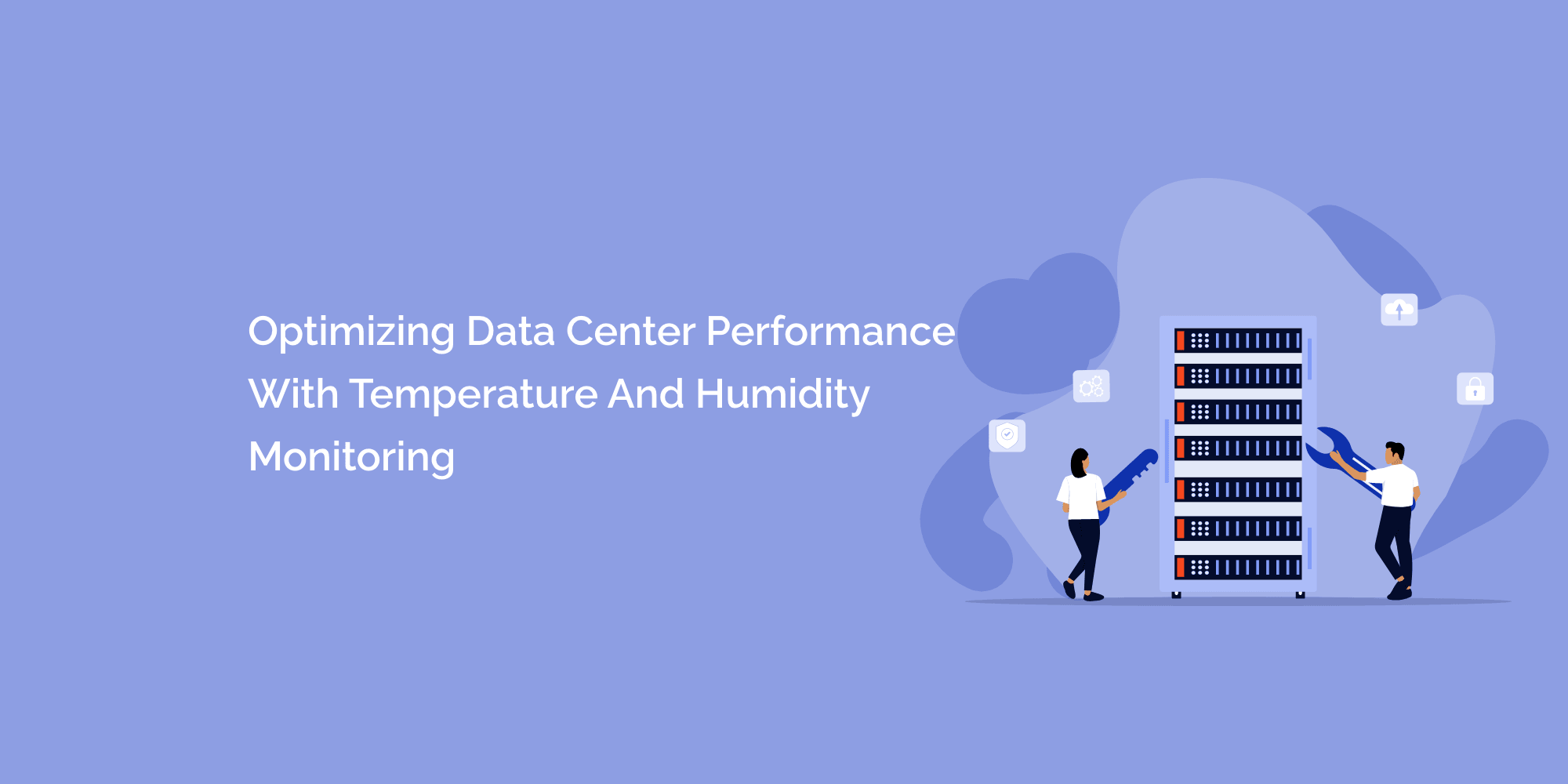Data centers are critical in modern businesses, housing the infrastructure supporting and storing vast data. Maintaining optimal conditions within data centers is essential for maximizing equipment performance, minimizing downtime, and ensuring data integrity. Temperature and humidity monitoring are critical aspects of data center management, as these factors can significantly impact the reliability and efficiency of the equipment. This blog will explore the importance of temperature and humidity monitoring in data centers and discuss how it can be leveraged to optimize overall data center performance.
The Impact of Temperature on Data Center Equipment
Temperature is a crucial factor that affects the performance and lifespan of data center equipment. High temperatures can lead to overheating, increased energy consumption, and accelerated component wear. Conversely, low temperatures can cause condensation, resulting in corrosion and potential equipment failure. By monitoring temperature levels in real-time, data center operators can identify potential issues, optimize cooling systems, and ensure the equipment operates within the recommended temperature range.
The Role of Humidity in Data Center Environments
Humidity is equally vital in data center environments. High humidity levels can lead to condensation on equipment, causing damage and potential short circuits. On the other hand, low humidity can create a static buildup, increasing the risk of electrostatic discharge and component failures. Monitoring humidity levels allows data center operators to maintain an optimal balance and protect equipment from moisture-related issues.
Real-Time Monitoring for Proactive Management
Real-time temperature and humidity monitoring enable data center operators to manage environmental conditions proactively. By leveraging advanced monitoring systems, operators can receive instant alerts and notifications when temperature or humidity levels deviate from the desired range. Proactive management allows immediate action, such as adjusting cooling systems, optimizing airflow, or resolving humidity imbalances before they lead to equipment failures or performance degradation.
Energy Efficiency and Cost Savings
Optimizing temperature and humidity levels in a data center can lead to significant energy savings and cost reduction. Data center operators can fine-tune cooling systems, airflow management, and humidity control mechanisms by maintaining precise control over these parameters. These optimizations reduce energy consumption, lower operational costs, and improve energy efficiency.
Data Integrity and Equipment Reliability
Maintaining proper temperature and humidity levels is crucial for preserving data integrity and ensuring the reliability of data center equipment. Fluctuations in environmental conditions can compromise the integrity of stored data, leading to data corruption or loss. Moreover, equipment failures due to improper environmental conditions can result in downtime and impact business continuity. By monitoring and controlling temperature and humidity, data center operators safeguard data integrity and minimize the risk of equipment failures.
Predictive Maintenance and Performance Optimization
Temperature and humidity monitoring can facilitate predictive maintenance and performance optimization in data centers. Operators can identify patterns and potential risks by analyzing historical data and trends. Predictive maintenance strategies can be implemented, allowing for proactive equipment maintenance and replacement, optimizing equipment performance, and reducing the likelihood of unexpected failures.
Integration with Data Center Management Systems
Temperature and humidity monitoring systems can integrate with data center management systems like Data Center Infrastructure Management (DCIM) platforms. The integration enables centralized monitoring, control, and reporting of environmental conditions. This holistic view allows data center operators to comprehensively understand the data center's performance, make informed decisions, and streamline operations.
Compliance with Industry Standards and Regulations
Data centers are subject to industry standards and regulations that dictate environmental conditions. Temperature and humidity monitoring helps data centers comply with these standards by ensuring conditions align with recommended ranges. Compliance with laws avoids penalties and demonstrates a commitment to best practices in data center management.
Selecting the Right Temperature and Humidity Monitoring Solution
Several factors should be considered when choosing a temperature and humidity monitoring solution for a data center. These include accuracy, reliability, real-time monitoring capabilities, alerting mechanisms, integration options, scalability, user-friendliness, and vendor support. Each data center has unique requirements, so selecting a solution that aligns with specific needs is essential.
Certainly! Here are some frequently asked questions (FAQs) about optimizing data center performance with temperature and humidity monitoring:
Why are temperature and humidity monitoring necessary in data centers?
Temperature and humidity monitoring is crucial in data centers to ensure optimal environmental conditions for equipment performance, energy efficiency, and data integrity. Fluctuations in these parameters can lead to equipment failures, increased energy consumption, and data corruption.
How does temperature affect data center performance?
Temperature plays a significant role in data center performance. High temperatures can lead to overheating, reduced equipment lifespan, and increased failure rates. Conversely, low temperatures can cause condensation and equipment damage. Monitoring and controlling temperature levels help maintain equipment reliability and prevent costly failures.
What is the impact of humidity on data center operations?
Humidity affects data center operations by influencing the risk of condensation and static electricity buildup. High humidity can lead to moisture-related issues and equipment corrosion, while low humidity can result in electrostatic discharge and equipment damage. Monitoring and controlling humidity levels are crucial for maintaining optimal conditions.
Conclusion
Temperature and humidity monitoring are critical components of data center management. By leveraging advanced monitoring systems, data center operators can optimize environmental conditions, minimize downtime, enhance energy efficiency, preserve data integrity, and ensure the reliability of their equipment. Real-time monitoring enables proactive management and predictive maintenance, reducing the risk of unexpected failures. Integration with data center management systems provides a comprehensive view of performance and streamlines operations. Choosing the right temperature and humidity monitoring solution is critical to achieving these benefits. By investing in temperature and humidity monitoring, data center operators can optimize performance, increase efficiency, and deliver reliable services to meet the demands of the digital age.








